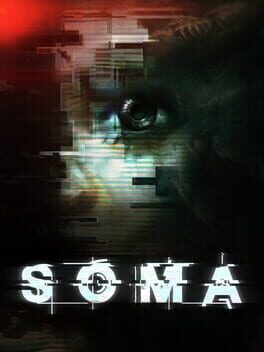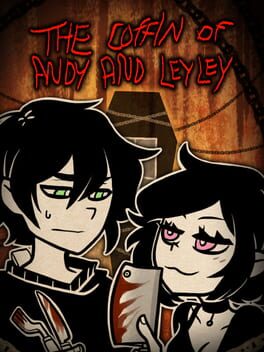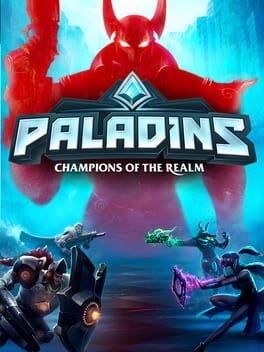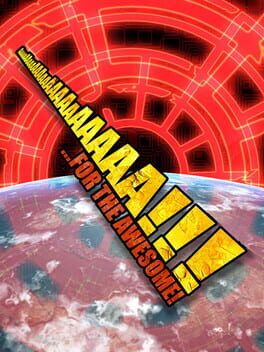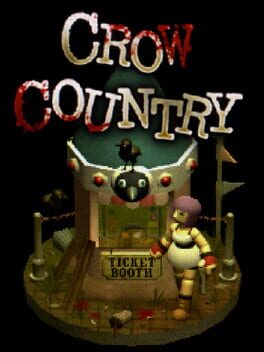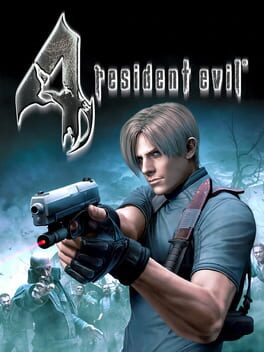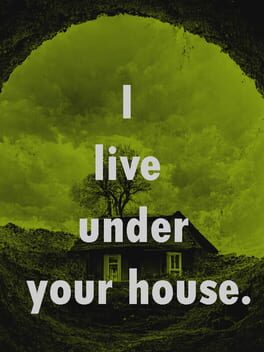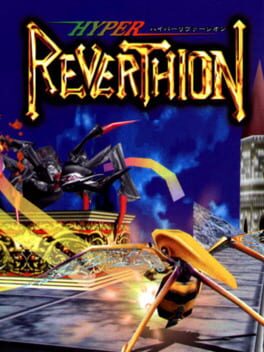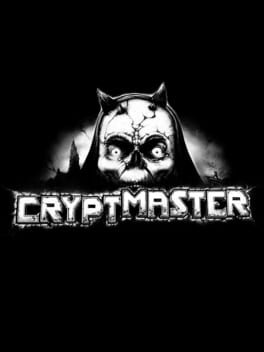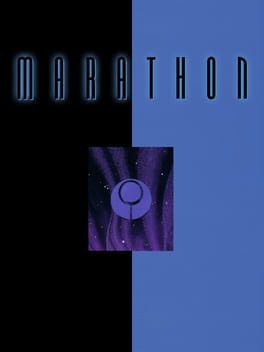burnoutenjoyer
279 Reviews liked by burnoutenjoyer
Elden Ring
2022
Elden Ring caught me completely off guard.
Prior to the game’s release people would ask me of I was “hyped” for it. I could only describe what I felt as a dull excitement. I knew that I would probably enjoy it, but I also felt like I knew exactly what to expect, and that the game would be nothing more than that, and nothing less at best. I didn’t ignore pre-release coverage of the game, but I didn’t really absorb it either. Pre-release coverage of most games is kind of useless to me, I don’t know what parts of marketing and previews I can really trust until I have the game in my hands. I saw the game, I watched others play the network test, but I didn’t have any real frame of reference for what exactly was going on or how it fit together.
My first run felt like I was going through the game at a breakneck pace. While I struggled early on, once I got some momentum I was killing many of the bosses on my first try. While I spent a good portion of my playthrough exploring the game naturally, at a certain point in the game I stopped doing optional content, and tried to rush to the end. I wanted to kill two birds with one stone: ignoring optional areas meant that I would have something new to do on subsequent playthroughs, and in reaching the end I would finally know the limits of the game’s scope and could play more leisurely, without such fervent thirst for whatever grand surprise could be next.
Even playing the game this way, it took 10 days of treating the game like a second job to beat it.
I remember when I was a kid I watched my dad reach Ganon’s Castle in Ocarina of Time. An area of the dungeon presents the player with about half a dozen paths laid out in a large circular room (or at least as circular as a room could be on the N64). Each of these doors lead to a short gauntlet, but I couldn't help but imagine: what would it be like if this style of action-adventure game had a Super Mario 64-style hub area. Demon’s Souls is perhaps the closest thing we ever got to the idea in my head, but it also made me realize that the hub world was never really the important part.
What I really wanted was an action-adventure game with environments that were varied, striking, unique, and imaginative. An action-adventure game that was willing to trade a realistic environment for an absolutely incomparable one. Early 3D games often made unusual choices in how to portray their settings, and while this more primitive aesthetic was born out of limitation, its abstract qualities allow us in retrospect to assign it certain romantic characteristics completely absent from even the most contemporary and sophisticated attempts at naturalism. Elden Ring may be the only modern game I have ever seen that so consistently offers up such numerous and diverse visuals of this same character, but with cutting intentionality.
The entirety of the Lands Between feels like an old secret, everything feels as impossible and forbidden as Ash Lake. Ash Lake, buried beneath a difficult downward platforming section, tucked away behind multiple trick walls in an out of the way corner of one of Dark Souls’ more sprawling areas, was something that From Software did not expect every player to see. In Elden Ring, virtually everything beyond the introduction and before one of the later dungeons is optional, and not just in the sense that it can be bypassed or circumvented. On my third playthrough I used a guide and tried to see as much of the game as I possibly could, and to try and play through each area in some semblance of an “appropriate order”, and I’m now confident that From Software did not really want people to play the game this way. There is so much content in this game that feels like it doesn’t want to be found, and having spoken to other players both online and in-person I know that many people miss even the more major areas in the game. While Ash Lake was a single hidden area, Elden Ring is an entire game that does not expect the vast majority of its players to see its whole, a game so vast and so truly free that even a person who has seen it all would have trouble feeling absolutely certain of it.
Of all the modern niceties that Elden Ring forgoes, its lack of progression trackers is one of the most appreciated absences. From annualized franchises to series reinventions, nearly every game of this type is constantly presenting the player with fractions: you have done X amount of objectives, and there are Y amount in the game. Breath of the Wild’s shrines, Forza Horizon’s races, all kinds of statistics shown during loading screens and in menus. Elden Ring lets you mark graces and place pins on your map screen, and you could use this, for example, to keep track of which dungeons you have or have not completed, but you can’t be sure for yourself that you’ve found all of them, or that you’ve found everything within. The first time that the player finds a dungeon behind an illusory wall, the first time they find a dungeon with multiple bosses, the first time they find a dungeon within a dungeon within a dungeon, how can they ever be sure?
In this sense, Elden Ring might be a game that, as far as the design of typical modern open world game is concerned, does a lot of things “wrong”. Whether its the complaints that some people have made about the minute details of its user interface and experience, or simple basic facts like From Software’s decision to not make this a direct continuation any of their more recognizable intellectual properties, people are having some trouble processing the idea that Elden Ring is not a sleek, edgeless product. This is almost without a doubt simply a result of Elden Ring’s massive popularity, having doubled the sales of From’s previous bestselling title; however, it is frankly embarrassing that we’re having the same tired conversations about this game that we were having about Dark Souls over a decade ago.
The game’s great triumph lies primarily in its structure. The reality of open world games is that the open world is almost always something necessarily separate from the rest of the game, and Elden Ring is no different. This is not a bad thing, the key to making a good open world game simply lies in making both the open world and the rest of the game equally interesting. From the loose platforming and exploration of the open world, to the careful crawl of dungeoneering, to the tight and tense combat and boss fights, Elden Ring’s core loop funnels the player into a more perfect rhythm than almost any other game of its kind.
I was a bit worried initially that background music would be more prominently featured throughout the game compared to previous From titles, but I have to admit they’ve knocked it out of the park. Every track so effectively created its mood, from the mystery of Liurnia, the oppressive noise of the Caelid wilds, the somber aura of Altus. I love how much of the game’s music is diegetic, the horns of the capital, the singing in the underground river city, the stringed instruments carried by the merchants. Where previous From games merely created feelings of tension in boss fights and relief in the hub areas, Elden Ring’s music gives the world its own sense of culture.
The only significant problem I have with the game is a handful of late-game bosses. It’s a particular shame both because the end of the game is basically just four back-to-back boss fights and its kind of a sour note to end on, and because if most of these bosses' individual phases were separate fights they would be some of my favorites that From has ever done. As they are though, they are at best brutal gauntlets requiring such a degree of consistent execution that it becomes difficult to really appreciate the encounter, and at their worst, they are Malenia, blade of Miquella.
I said once, and I’m not the only one, that “Elden Ring is someone’s dream game, but I’m not sure if it’s mine.” I now think that Elden Ring is a game I could not personally have dreamt in the first place. It’s a game that delivers on promises unkept by so many other games, that so thoroughly fleshes out ideas that other games only hint at. Often when a new game comes out I find myself wanting to replay games in the same series or genre to see how my perspective on them has shifted; no other game has forced me to reevaluate so many of its predecessors. No other game has so insistently made me grapple with the possibility that the best game I will ever play is one that has yet to be made.
Prior to the game’s release people would ask me of I was “hyped” for it. I could only describe what I felt as a dull excitement. I knew that I would probably enjoy it, but I also felt like I knew exactly what to expect, and that the game would be nothing more than that, and nothing less at best. I didn’t ignore pre-release coverage of the game, but I didn’t really absorb it either. Pre-release coverage of most games is kind of useless to me, I don’t know what parts of marketing and previews I can really trust until I have the game in my hands. I saw the game, I watched others play the network test, but I didn’t have any real frame of reference for what exactly was going on or how it fit together.
My first run felt like I was going through the game at a breakneck pace. While I struggled early on, once I got some momentum I was killing many of the bosses on my first try. While I spent a good portion of my playthrough exploring the game naturally, at a certain point in the game I stopped doing optional content, and tried to rush to the end. I wanted to kill two birds with one stone: ignoring optional areas meant that I would have something new to do on subsequent playthroughs, and in reaching the end I would finally know the limits of the game’s scope and could play more leisurely, without such fervent thirst for whatever grand surprise could be next.
Even playing the game this way, it took 10 days of treating the game like a second job to beat it.
I remember when I was a kid I watched my dad reach Ganon’s Castle in Ocarina of Time. An area of the dungeon presents the player with about half a dozen paths laid out in a large circular room (or at least as circular as a room could be on the N64). Each of these doors lead to a short gauntlet, but I couldn't help but imagine: what would it be like if this style of action-adventure game had a Super Mario 64-style hub area. Demon’s Souls is perhaps the closest thing we ever got to the idea in my head, but it also made me realize that the hub world was never really the important part.
What I really wanted was an action-adventure game with environments that were varied, striking, unique, and imaginative. An action-adventure game that was willing to trade a realistic environment for an absolutely incomparable one. Early 3D games often made unusual choices in how to portray their settings, and while this more primitive aesthetic was born out of limitation, its abstract qualities allow us in retrospect to assign it certain romantic characteristics completely absent from even the most contemporary and sophisticated attempts at naturalism. Elden Ring may be the only modern game I have ever seen that so consistently offers up such numerous and diverse visuals of this same character, but with cutting intentionality.
The entirety of the Lands Between feels like an old secret, everything feels as impossible and forbidden as Ash Lake. Ash Lake, buried beneath a difficult downward platforming section, tucked away behind multiple trick walls in an out of the way corner of one of Dark Souls’ more sprawling areas, was something that From Software did not expect every player to see. In Elden Ring, virtually everything beyond the introduction and before one of the later dungeons is optional, and not just in the sense that it can be bypassed or circumvented. On my third playthrough I used a guide and tried to see as much of the game as I possibly could, and to try and play through each area in some semblance of an “appropriate order”, and I’m now confident that From Software did not really want people to play the game this way. There is so much content in this game that feels like it doesn’t want to be found, and having spoken to other players both online and in-person I know that many people miss even the more major areas in the game. While Ash Lake was a single hidden area, Elden Ring is an entire game that does not expect the vast majority of its players to see its whole, a game so vast and so truly free that even a person who has seen it all would have trouble feeling absolutely certain of it.
Of all the modern niceties that Elden Ring forgoes, its lack of progression trackers is one of the most appreciated absences. From annualized franchises to series reinventions, nearly every game of this type is constantly presenting the player with fractions: you have done X amount of objectives, and there are Y amount in the game. Breath of the Wild’s shrines, Forza Horizon’s races, all kinds of statistics shown during loading screens and in menus. Elden Ring lets you mark graces and place pins on your map screen, and you could use this, for example, to keep track of which dungeons you have or have not completed, but you can’t be sure for yourself that you’ve found all of them, or that you’ve found everything within. The first time that the player finds a dungeon behind an illusory wall, the first time they find a dungeon with multiple bosses, the first time they find a dungeon within a dungeon within a dungeon, how can they ever be sure?
In this sense, Elden Ring might be a game that, as far as the design of typical modern open world game is concerned, does a lot of things “wrong”. Whether its the complaints that some people have made about the minute details of its user interface and experience, or simple basic facts like From Software’s decision to not make this a direct continuation any of their more recognizable intellectual properties, people are having some trouble processing the idea that Elden Ring is not a sleek, edgeless product. This is almost without a doubt simply a result of Elden Ring’s massive popularity, having doubled the sales of From’s previous bestselling title; however, it is frankly embarrassing that we’re having the same tired conversations about this game that we were having about Dark Souls over a decade ago.
The game’s great triumph lies primarily in its structure. The reality of open world games is that the open world is almost always something necessarily separate from the rest of the game, and Elden Ring is no different. This is not a bad thing, the key to making a good open world game simply lies in making both the open world and the rest of the game equally interesting. From the loose platforming and exploration of the open world, to the careful crawl of dungeoneering, to the tight and tense combat and boss fights, Elden Ring’s core loop funnels the player into a more perfect rhythm than almost any other game of its kind.
I was a bit worried initially that background music would be more prominently featured throughout the game compared to previous From titles, but I have to admit they’ve knocked it out of the park. Every track so effectively created its mood, from the mystery of Liurnia, the oppressive noise of the Caelid wilds, the somber aura of Altus. I love how much of the game’s music is diegetic, the horns of the capital, the singing in the underground river city, the stringed instruments carried by the merchants. Where previous From games merely created feelings of tension in boss fights and relief in the hub areas, Elden Ring’s music gives the world its own sense of culture.
The only significant problem I have with the game is a handful of late-game bosses. It’s a particular shame both because the end of the game is basically just four back-to-back boss fights and its kind of a sour note to end on, and because if most of these bosses' individual phases were separate fights they would be some of my favorites that From has ever done. As they are though, they are at best brutal gauntlets requiring such a degree of consistent execution that it becomes difficult to really appreciate the encounter, and at their worst, they are Malenia, blade of Miquella.
I said once, and I’m not the only one, that “Elden Ring is someone’s dream game, but I’m not sure if it’s mine.” I now think that Elden Ring is a game I could not personally have dreamt in the first place. It’s a game that delivers on promises unkept by so many other games, that so thoroughly fleshes out ideas that other games only hint at. Often when a new game comes out I find myself wanting to replay games in the same series or genre to see how my perspective on them has shifted; no other game has forced me to reevaluate so many of its predecessors. No other game has so insistently made me grapple with the possibility that the best game I will ever play is one that has yet to be made.
1000xResist
2024
I absolutely love walking simulators and adventure games. Any day, I will choose a game with a fantastic story over anything else. The complex story and moral choices in 1000xResist initially drew my attention, but ultimately, it left me with a walking simulator filled with anime tropes and more questions than answers. This game swiftly teaches you that there are no definitive answers or absolutes. The game begins with a reasonable number of questions, but towards the end, only a few remain. What remained for me was a game I will soon forget.
You play a character named Watcher. She is one of the Six Sisters, who are part of some sort of post-apocalyptic society or group. The environment is very sterile and too perfect. It almost feels like a starship or something else. The game thrusts you into an unknown part of this timeline. It is up to you to unravel and follow the linear path that the game leads you on. There are a few instances where you have more control over Watcher, specifically when you explore the "center" and engage in conversations with people. This ends up feeling like a chore because you have to do it multiple times, and only yesterday (as of this writing) did the developers patch in a map. There is almost no gameplay. If you consider zipping around the sky on some flying orbs as gameplay, you shouldn't expect much more. You will likely navigate through thousands of lines of spoken dialogue. The voice-over is decent, if mundane. Even side characters and NPCs speak in every scene.
The pacing is the only thing the game has going for it. While the first few chapters feel repetitive, as you commune with various sisters, you go from location to location, simply walking around in small rooms and engaging in dialogue. This will bore anyone who isn't an adventure game fan. The story is hard enough to follow, and when you try to make sense of it all, you get more characters to trust you. The game advances when you talk to the correct person. At times, the game presents this as a task, while at others, it becomes more evident.
This game defies easy description or explanation. At times, the dialogue and story can be quite poignant, touching on topics such as adolescence and parental conflict and separation. Additionally, the game heavily references the COVID-19 pandemic, with characters donning masks and discussing a disease that could potentially wipe out humanity. Honestly. I can't even tell you if that's exactly what the story is about, as it's so vague all the time. We don't get any true, hard facts on what's going on in this world. The "Allmother" named Iris serves as the foundation for these Six Sisters, who have the ability to replicate themselves. It's just a bunch of confusing threads that don't really lead anywhere.
I had a strong desire to enjoy this game. The narrative exhibits promise, featuring numerous characters on the verge of likability or memorability, yet it succumbs to the anime conventions of guiding you through a perpetually perplexing plot, only to leave you feeling let down at the conclusion. At times, the narrative excels, presenting you with a flurry of answers towards the conclusion. This can be satisfying and memorable, but 1000xResist just refuses to give in. I just wanted the game to end, but it goes on for 10–12 hours even if you read all of the dialog and skip most of the voice lines. The choices don't really matter until the very end of the game, and even then, you aren't sure if there were choices earlier that mattered.
1000xResist is hard to recommend, even to anime lovers. The animations, visuals, and everything else are fairly generic, forgettable, and mostly dull. The game's overuse of bloom and lack of lip-syncing during dialog gives it a cheap, low-budget feel, which is normally acceptable if executed well. The game drags the player along for so long that, in the end, you expect a massive pay-off but end up with a fizzle and sputter. I can't really recommend this game to anyone outside of die-hard adventure game fans.
You play a character named Watcher. She is one of the Six Sisters, who are part of some sort of post-apocalyptic society or group. The environment is very sterile and too perfect. It almost feels like a starship or something else. The game thrusts you into an unknown part of this timeline. It is up to you to unravel and follow the linear path that the game leads you on. There are a few instances where you have more control over Watcher, specifically when you explore the "center" and engage in conversations with people. This ends up feeling like a chore because you have to do it multiple times, and only yesterday (as of this writing) did the developers patch in a map. There is almost no gameplay. If you consider zipping around the sky on some flying orbs as gameplay, you shouldn't expect much more. You will likely navigate through thousands of lines of spoken dialogue. The voice-over is decent, if mundane. Even side characters and NPCs speak in every scene.
The pacing is the only thing the game has going for it. While the first few chapters feel repetitive, as you commune with various sisters, you go from location to location, simply walking around in small rooms and engaging in dialogue. This will bore anyone who isn't an adventure game fan. The story is hard enough to follow, and when you try to make sense of it all, you get more characters to trust you. The game advances when you talk to the correct person. At times, the game presents this as a task, while at others, it becomes more evident.
This game defies easy description or explanation. At times, the dialogue and story can be quite poignant, touching on topics such as adolescence and parental conflict and separation. Additionally, the game heavily references the COVID-19 pandemic, with characters donning masks and discussing a disease that could potentially wipe out humanity. Honestly. I can't even tell you if that's exactly what the story is about, as it's so vague all the time. We don't get any true, hard facts on what's going on in this world. The "Allmother" named Iris serves as the foundation for these Six Sisters, who have the ability to replicate themselves. It's just a bunch of confusing threads that don't really lead anywhere.
I had a strong desire to enjoy this game. The narrative exhibits promise, featuring numerous characters on the verge of likability or memorability, yet it succumbs to the anime conventions of guiding you through a perpetually perplexing plot, only to leave you feeling let down at the conclusion. At times, the narrative excels, presenting you with a flurry of answers towards the conclusion. This can be satisfying and memorable, but 1000xResist just refuses to give in. I just wanted the game to end, but it goes on for 10–12 hours even if you read all of the dialog and skip most of the voice lines. The choices don't really matter until the very end of the game, and even then, you aren't sure if there were choices earlier that mattered.
1000xResist is hard to recommend, even to anime lovers. The animations, visuals, and everything else are fairly generic, forgettable, and mostly dull. The game's overuse of bloom and lack of lip-syncing during dialog gives it a cheap, low-budget feel, which is normally acceptable if executed well. The game drags the player along for so long that, in the end, you expect a massive pay-off but end up with a fizzle and sputter. I can't really recommend this game to anyone outside of die-hard adventure game fans.
Banzai Escape
2016
Soma
2015
En muchos aspectos, la obra cumbre de Frictional, o cuanto menos, la cresta final de su momento, si los próximos Amnesia son tan malos como realmente parecen. En muchos aspectos, seguir el trabajo de este estudio es seguir la labor de toda una subcultura del videojuego que empezó a finales de los 2000 y acabó más o menos por esta época, y como broche a sus puntos fuertes y débiles, es un representante perfecto.
Es un juego tenso, un juego bellísimo, un juego escrito con sensibilidad e inteligencia, y también un juego con una grave crisis existencial sobre lo que desea ser ¿Es un juego de terror que trata de pillarte desprevenide con cada nueva habitación, o una colección de ensayos meditacionales? A día de hoy, la mayoría cree que es más lo segundo que lo primero, y esto es algo que la propia Frictional piensa. Pero no se nos puede olvidar que, en su momento, cada monstruo tenía que actuar como un nuevo reto lúdico, como una continuación natural de lo que Amnesia había logrado. Creo que es importante recordar esto, no para pintar mal a Frictional, sino para recordar esta tensión y desequilibrio en la base misma de este entorno. Hubo muchos juegos de terror con problemas similares, pero ninguno lo representa mejor que Soma porque proviene de la gente que inventó este ritmo y lo hizo viable. Por eso creo que es imprescindible jugar esta obra para entender una época muy concreta del medio, de la cultura en torno al medio e incluso de la Internet de los 2010.
----------------
In many ways, this Frictional's crowning achievement, or at the very least the last hurrah judging by how bad the next Amnesia titles look. To follow the work of this studio is to follow the story of an entire video game subculture, one that began in the late 2000s and ended around this time, and for that reason it works as a capstone to its strengths and weaknesses.
It's a tense game, a gorgeous game, a game written sensibly and intelligently, and also a game with serious existential crises about what it wants to be. Is it a horror game that tries to catch you off guard in each room, or a catalogue of chin-stroking essays? As of today, most believe it's more the latter than the former, and this is how Frictional thinks about it today. But we can't forget that, at the time, each monster was meant to add up new challenges and progressing on what Amnesia already achieved. I think it's important to remember this, not to paint Frictional in a bad light, but to remember this tension and imbalance that lied at the very foundation of this scenes. Many horror games of this era faced similar issues, but none represent it better than Soma because it came from the people who invented this and made it viable. That's why I think it's essential to play this game if you want to understand a specific era of the medium, of the culture around the medium, and even the Internet of the 2010s.
Es un juego tenso, un juego bellísimo, un juego escrito con sensibilidad e inteligencia, y también un juego con una grave crisis existencial sobre lo que desea ser ¿Es un juego de terror que trata de pillarte desprevenide con cada nueva habitación, o una colección de ensayos meditacionales? A día de hoy, la mayoría cree que es más lo segundo que lo primero, y esto es algo que la propia Frictional piensa. Pero no se nos puede olvidar que, en su momento, cada monstruo tenía que actuar como un nuevo reto lúdico, como una continuación natural de lo que Amnesia había logrado. Creo que es importante recordar esto, no para pintar mal a Frictional, sino para recordar esta tensión y desequilibrio en la base misma de este entorno. Hubo muchos juegos de terror con problemas similares, pero ninguno lo representa mejor que Soma porque proviene de la gente que inventó este ritmo y lo hizo viable. Por eso creo que es imprescindible jugar esta obra para entender una época muy concreta del medio, de la cultura en torno al medio e incluso de la Internet de los 2010.
----------------
In many ways, this Frictional's crowning achievement, or at the very least the last hurrah judging by how bad the next Amnesia titles look. To follow the work of this studio is to follow the story of an entire video game subculture, one that began in the late 2000s and ended around this time, and for that reason it works as a capstone to its strengths and weaknesses.
It's a tense game, a gorgeous game, a game written sensibly and intelligently, and also a game with serious existential crises about what it wants to be. Is it a horror game that tries to catch you off guard in each room, or a catalogue of chin-stroking essays? As of today, most believe it's more the latter than the former, and this is how Frictional thinks about it today. But we can't forget that, at the time, each monster was meant to add up new challenges and progressing on what Amnesia already achieved. I think it's important to remember this, not to paint Frictional in a bad light, but to remember this tension and imbalance that lied at the very foundation of this scenes. Many horror games of this era faced similar issues, but none represent it better than Soma because it came from the people who invented this and made it viable. That's why I think it's essential to play this game if you want to understand a specific era of the medium, of the culture around the medium, and even the Internet of the 2010s.
Edgy story written for edgy teenagers who think watching gore etc makes you "cool". If you are an adult and you like this? I don't know what to tell you. RPG Maker games due to their simplified gameplay usually shine in their story and characters and world building... that's not present here. The main characters are something edgy 4chan kid would make back in 2015, Ashley's only trait is that she's possessive/ obsessive (wannabe yandere) over her brother and Andrew is a pushover who does whatever she wants. No character development. The dialogue is cringy and edgy. The game centers mostly around their sexual tension and there are no meaningful themes. Most of the stuff is just for shock value and yet again - to appear more edgy and dark. This game is just pure gooner garbage.
Paladins
2017
Crow Country
2024
One of the absolute must-plays of 2024. Video games finally look this good. Even if survival horror isn't usually your cup of tea, I struggle to imagine a person who likes video games who won't get something out of this. I have trouble imagining a more detailed review I might give this game that doesn't just boil down to me describing plain and simple facts about the game in a way that implies its the tightest shit I've ever seen. Play it.
Mad Max
2015
TLDR: Clone of better games, clunky combat, repetitive, but still pretty fun and a good experience for Mad Max fans. It has its pros and cons, but in the end it's a good enough time.
With Furiosa out now I thought I'd play the Mad Max game for the first time, and it was an experience I both really liked and...didn't. Some things I really liked here was how it absolutely nailed the atmosphere of the movies. Not to sound like IGN, but it really makes you feel like you're in the Mad Max universe. Sure, The Wasteland can look extremely barren and boring but it's a wasteland. It's supposed to. That's what Mad Max is. I found it fun to drive through the world, and what made it fun was how awesome the Magnum Opus is. It's so much fun to upgrade this car and constantly find ways to change it to fit certain missions. You also aren't limited to how you have to improve it which was cool. But what's ironic is how much freedom you have in the car upgrades but how little in everything else.
I felt that Max himself was restricted in what he can do. He isn't a very good jumper and I felt that the shotgun could've been used more. His movements just feel limited to where you can't jump to places and it can make it a pain to get around. I like upgrading him with the Griffa tokens and the upgrades like you do with the car, but again I think there could've been more to do with him. Despite that, I still found the combat to be fun. I think it's a clunky, cheaper version than Batman Arkham but it was still fun enough. Evading and parrying wasn't always responsive and he'd sometimes punch the wrong guy, but overall combat was fine. I liked finding weapons lying around to use for a bit. And Max's Fury is so cool.
But after a while the game gets super repetitive. 90% of the missions are beating up a small array of enemies or car combat. That obviously is Mad Max in the movies, but I wanted more variety out of this game. I also thought the story was lacking and the game forces hours of repetitive side missions to fill the gaps of what it chose not to do in its already weak story. There are emotional moments towards the end that got me and the ending scene wraps this up perfectly, but the story is worse than Beyond Thunderdome's.
I also noticed as soon as I got in the game it's very reminiscent of Uncharted, Batman Arkham, and Borderlands. It feels like a cheap, worse version of all three of these games. Is this game suitable? Yes. Is it good for Mad Max fans? Yes. Does it appear like a clone of those that's worse than all? Yes.
So in the end there were quite a few things I enjoyed in this game. Collectibles, scrap hunting, the atmosphere, upgrading the car, and being Max were all highlights. The problem is that the overall repetitiveness and weak story is a huge drawback and the presentation of a worse version of Uncharted and Batman Arkham. It's good enough, but I wouldn't return to it.
With Furiosa out now I thought I'd play the Mad Max game for the first time, and it was an experience I both really liked and...didn't. Some things I really liked here was how it absolutely nailed the atmosphere of the movies. Not to sound like IGN, but it really makes you feel like you're in the Mad Max universe. Sure, The Wasteland can look extremely barren and boring but it's a wasteland. It's supposed to. That's what Mad Max is. I found it fun to drive through the world, and what made it fun was how awesome the Magnum Opus is. It's so much fun to upgrade this car and constantly find ways to change it to fit certain missions. You also aren't limited to how you have to improve it which was cool. But what's ironic is how much freedom you have in the car upgrades but how little in everything else.
I felt that Max himself was restricted in what he can do. He isn't a very good jumper and I felt that the shotgun could've been used more. His movements just feel limited to where you can't jump to places and it can make it a pain to get around. I like upgrading him with the Griffa tokens and the upgrades like you do with the car, but again I think there could've been more to do with him. Despite that, I still found the combat to be fun. I think it's a clunky, cheaper version than Batman Arkham but it was still fun enough. Evading and parrying wasn't always responsive and he'd sometimes punch the wrong guy, but overall combat was fine. I liked finding weapons lying around to use for a bit. And Max's Fury is so cool.
But after a while the game gets super repetitive. 90% of the missions are beating up a small array of enemies or car combat. That obviously is Mad Max in the movies, but I wanted more variety out of this game. I also thought the story was lacking and the game forces hours of repetitive side missions to fill the gaps of what it chose not to do in its already weak story. There are emotional moments towards the end that got me and the ending scene wraps this up perfectly, but the story is worse than Beyond Thunderdome's.
I also noticed as soon as I got in the game it's very reminiscent of Uncharted, Batman Arkham, and Borderlands. It feels like a cheap, worse version of all three of these games. Is this game suitable? Yes. Is it good for Mad Max fans? Yes. Does it appear like a clone of those that's worse than all? Yes.
So in the end there were quite a few things I enjoyed in this game. Collectibles, scrap hunting, the atmosphere, upgrading the car, and being Max were all highlights. The problem is that the overall repetitiveness and weak story is a huge drawback and the presentation of a worse version of Uncharted and Batman Arkham. It's good enough, but I wouldn't return to it.
Mad Max
2015
A lot better than I was expecting and I was absolutely gobsmacked with the amount of content and things to do in this game. It does get pretty repetitive with its combat and mission structure and the story has this hamfisted and rushed romance at the end which made the pacing fall face first. it still manages to be a really fun game with a well realised world where they go even deeper with the reality that this desert wasteland was once a thriving Australia. Upgrading your magnum opus car to being this unstoppable beast by the end was a really satisfying journey and its thanks to this games addicting sense of progression when you clear side missions and optional objectives that really keeps you around longer than you expect
Resident Evil 4
2005
This game was always really unattractive to me and I always felt like like it was way too hyped despite never having played it, but after trying it out myself, I definitely do understand it now. RE4 loses pretty much any kind of horror the series could have had, but despite that it manages to be an extremely memorable experience, with fast combat, over the top cutscenes and memorable characters. I think the biggest point about this game though, is the pacing. The game is always introducing new things and keeping the perfect amount of pressure on you to always be engaging. RE4 is linear game of a considerable length and it never managed to feel super repetitive, which is a great achievement.
Indie horror games with PS1-style graphics are becoming abundant these days, and some don't have any substance or meaning. The game "I live under your house" begins with the player traversing underground tunnels as a mysterious creature—or person. The mystery character's thoughts drive the narrative. A green filter surrounds the entire game, giving it the appearance of an original GameBoy LCD.
The low resolution/low polygonal visuals and short draw distance help to add dread and tension without having to actually create it. You invade the house you are living in, but I can't spoil anything. Let's just say the ambient music and sound effects add a lot of tension. There are no jump scares or cheap thrills here. The game doesn't need it. The game's haunting visuals and atmosphere leave you yearning for more dialogue. Whenever the character speaks, I just hold my breath, expecting something to happen. Each chapter only takes a few minutes to complete, but each location you end up at is just as intense as the last.
I will talk about the story DLC. It's only $1 and is much better than the main game. It adds two new chapters to the game and seriously increases the sense of claustraphobia. There are fewer 2D dialogue-heavy scenes and more 3D exploration. The DLC is short but also incredibly intense and answers a lot of questions from the base game. The DLC chapters have better writing and storytelling, so you get a better idea of your surroundings, and the severe sense of dread the main character is feeling comes across strongly.
Overall, I Live Under Your House is a very short but intense horror game with PS1-style visuals, haunting ambient music, and atmosphere. There are some disturbing images and scenes that can really get under your skin. This is a perfect game to play with all of the lights off and headphones on.
The low resolution/low polygonal visuals and short draw distance help to add dread and tension without having to actually create it. You invade the house you are living in, but I can't spoil anything. Let's just say the ambient music and sound effects add a lot of tension. There are no jump scares or cheap thrills here. The game doesn't need it. The game's haunting visuals and atmosphere leave you yearning for more dialogue. Whenever the character speaks, I just hold my breath, expecting something to happen. Each chapter only takes a few minutes to complete, but each location you end up at is just as intense as the last.
I will talk about the story DLC. It's only $1 and is much better than the main game. It adds two new chapters to the game and seriously increases the sense of claustraphobia. There are fewer 2D dialogue-heavy scenes and more 3D exploration. The DLC is short but also incredibly intense and answers a lot of questions from the base game. The DLC chapters have better writing and storytelling, so you get a better idea of your surroundings, and the severe sense of dread the main character is feeling comes across strongly.
Overall, I Live Under Your House is a very short but intense horror game with PS1-style visuals, haunting ambient music, and atmosphere. There are some disturbing images and scenes that can really get under your skin. This is a perfect game to play with all of the lights off and headphones on.
Hyper Reverthion
1996
Cryptmaster
2024
Cryptmaster: I beat this one, but only after running out of steam yet stubbornly persevering. It's a bummer, too, because I think Cryptmaster has a really strong opening -- but within 20 minutes you've seen just about everything you'll see across the next dozen hours.
I liked the premise of both its puzzles and progression. In order to learn more moves in combat, you needed to find “letters” that would fill in blanks on the bottom of your screen. Guess the word as early as you can and you either learn a new move or some backstory, which is essentially experience that once enough is garnered the character gains another hitpoint. Advanced combat moves require souls, and the fun way of getting those is by solving riddles you'll encounter on the journey.
This was all good, but you'll get this before you even finish the tutorial area. It's literally all in the demo of the game. New levels and areas hardly even look very different thanks to the game's achromatic visual style which definitely becomes grating (you can add some color in the options but it's clearly “wrong”, if that makes sense). Everyone you meet is kind of annoying and you want to spend as little time with them as possible. Sure: when asked to defile a statue and you type in “masturbate” and it works, you'll probably laugh a bit. “Shit” even makes a fart sound and you can do it any time. That's neat, but is it really going to keep you around? It probably shouldn't.
I guess my first suggestion for improvement would be to drastically shorten the game as I don't think there's enough going on here to justify its length. I wish the “letters” system worked a bit faster as by the time I beat the game, I don't think I even had half of any characters' total vocab unlocked – and this was with me solving almost every single riddle tossed my way (for more letters, combat only gives you a measly one as loot). I also wish the attack cooldown was shorter on my characters as a lot of the combat was just me sitting there waiting out a clock.
Lots and lots of work went into this game and it shows: the number of words you can type and have the Cryptmaster respond to is shocking, but was it needed? I don't think so. Sometimes it was nice, like when one time I said “rivers” but the intended answer was “water”, the game gave it to me. Cryptmaster is actually quite forgiving in its combat, too, as enemies won't respawn in challenging locations and you can go back to an altar (which revives/heals) at any time with a teleport. The Cryptmaster will also offer to solve riddles for you if you're obviously stuck.
I liked it until I didn't yet played on anyways and I regret that choice. I wish I just played the demo and forgot about trying this.
I do not recommend Cryptmaster. It's a cool concept but it definitely drags on too long and it's an adventure more likely to reward you with a headache than anything else.
I liked the premise of both its puzzles and progression. In order to learn more moves in combat, you needed to find “letters” that would fill in blanks on the bottom of your screen. Guess the word as early as you can and you either learn a new move or some backstory, which is essentially experience that once enough is garnered the character gains another hitpoint. Advanced combat moves require souls, and the fun way of getting those is by solving riddles you'll encounter on the journey.
This was all good, but you'll get this before you even finish the tutorial area. It's literally all in the demo of the game. New levels and areas hardly even look very different thanks to the game's achromatic visual style which definitely becomes grating (you can add some color in the options but it's clearly “wrong”, if that makes sense). Everyone you meet is kind of annoying and you want to spend as little time with them as possible. Sure: when asked to defile a statue and you type in “masturbate” and it works, you'll probably laugh a bit. “Shit” even makes a fart sound and you can do it any time. That's neat, but is it really going to keep you around? It probably shouldn't.
I guess my first suggestion for improvement would be to drastically shorten the game as I don't think there's enough going on here to justify its length. I wish the “letters” system worked a bit faster as by the time I beat the game, I don't think I even had half of any characters' total vocab unlocked – and this was with me solving almost every single riddle tossed my way (for more letters, combat only gives you a measly one as loot). I also wish the attack cooldown was shorter on my characters as a lot of the combat was just me sitting there waiting out a clock.
Lots and lots of work went into this game and it shows: the number of words you can type and have the Cryptmaster respond to is shocking, but was it needed? I don't think so. Sometimes it was nice, like when one time I said “rivers” but the intended answer was “water”, the game gave it to me. Cryptmaster is actually quite forgiving in its combat, too, as enemies won't respawn in challenging locations and you can go back to an altar (which revives/heals) at any time with a teleport. The Cryptmaster will also offer to solve riddles for you if you're obviously stuck.
I liked it until I didn't yet played on anyways and I regret that choice. I wish I just played the demo and forgot about trying this.
I do not recommend Cryptmaster. It's a cool concept but it definitely drags on too long and it's an adventure more likely to reward you with a headache than anything else.
Marathon
1994
it says a lot about the time frame this game came out when merely a single year after Doom came out, another game developer decided to innovate with dual wielding, more interactivity, a complicated story that you have to piece together through terminals with esoteric details that need deduction from the player himself and level design that feel like a puzzle on itself (Colony Ship for Sale, Cheap! wasn't that bad)
Man, This industry had it good.
Man, This industry had it good.



